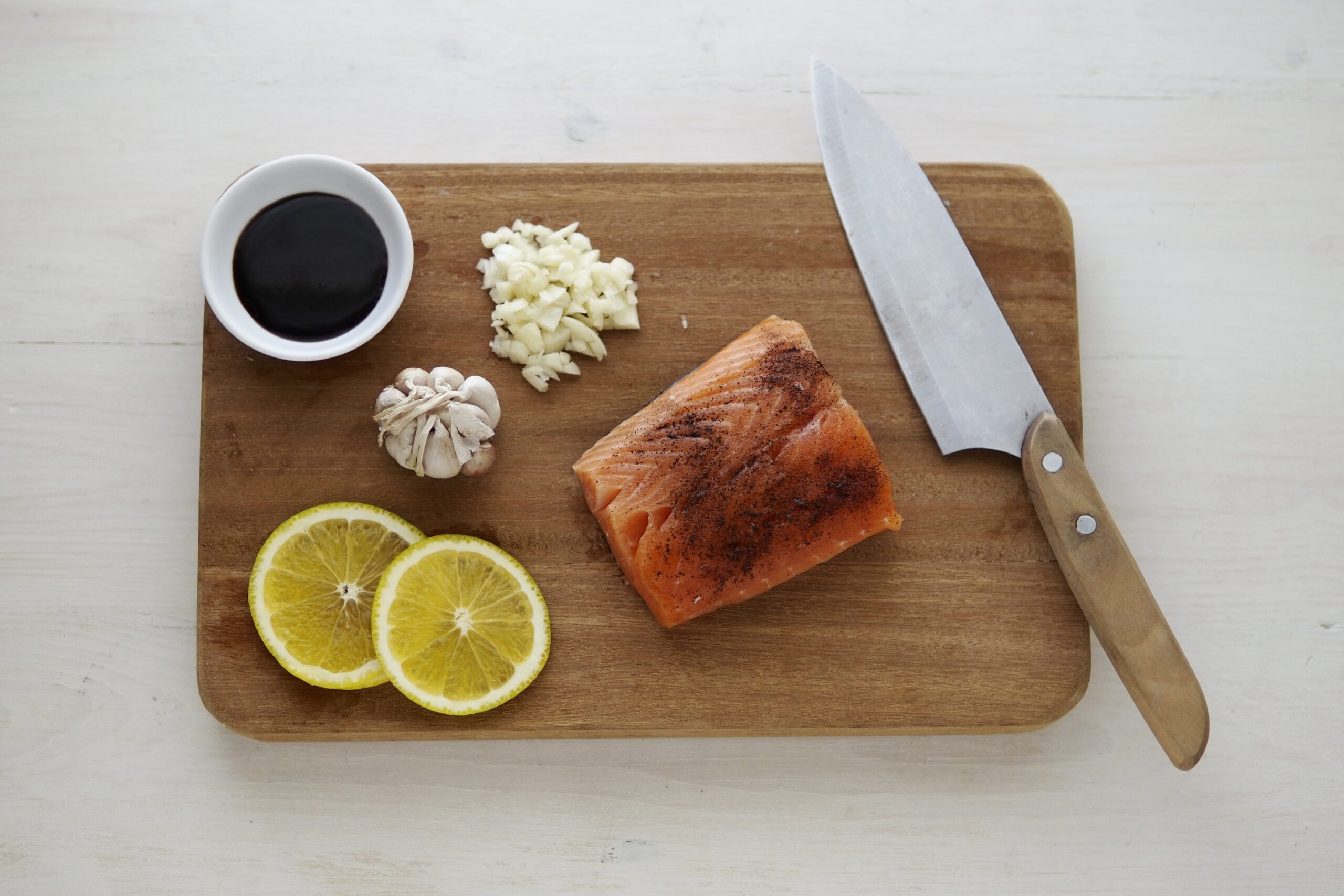Thinking of going on a low carb diet but not sure where to start? Look no further! In this article, we’ll discuss the foods you should steer clear of when following a low carb diet. From hidden sugars to starchy temptations, we’ve got you covered on what to avoid to stay on track. So, grab a cup of tea and get ready to learn about the foods that might be sabotaging your low carb journey.
Understanding Carbohydrates
Definition of carbohydrates
Carbohydrates are one of the three macronutrients that provide energy to the body, alongside proteins and fats. They are composed of sugar molecules and are found in a variety of foods, including grains, fruits, vegetables, legumes, and dairy products. Carbohydrates can be classified into three categories: sugars, starches, and fibers. Sugars are simple carbohydrates found in foods like fruits, honey, and refined sugars. Starches are complex carbohydrates found in foods such as bread, pasta, and potatoes. Finally, fibers are indigestible carbohydrates found in foods like whole grains, fruits, and vegetables.
Role of carbs in a diet
Carbohydrates play a vital role in providing energy to the body. When consumed, carbohydrates are broken down into glucose, which is the primary fuel source for our cells. Glucose fuels our brain, muscles, and organs, ensuring they function optimally. Carbs also help regulate blood sugar levels, support proper digestion, and provide essential nutrients such as vitamins, minerals, and fiber. However, it is important to consume the right types and amounts of carbohydrates to maintain a balanced and healthy diet.
Understanding Low-Carb Diets
The concept of a low-carb diet
A low-carb diet is a dietary approach that emphasizes reducing the consumption of carbohydrates, particularly refined and processed carbs. The main idea behind a low-carb diet is to limit insulin spikes and promote the body’s metabolism of stored fat for energy. By decreasing carbohydrate intake, the body is forced to utilize fat as its primary fuel source, leading to weight loss and improved overall health. Low-carb diets typically prioritize the consumption of lean proteins, healthy fats, and non-starchy vegetables while limiting or avoiding high-carb foods like sugary snacks, grains, and certain fruits.
Potential benefits of a low-carb diet
Adopting a low-carb diet can offer numerous health benefits. One significant advantage is weight loss. By restricting carbohydrate intake, the body switches to burning stored fat, resulting in gradual and sustainable weight loss. Low-carb diets have also been shown to improve markers of heart health, such as reducing blood triglycerides, increasing HDL (good) cholesterol, and lowering blood pressure. Additionally, low-carb diets can help control blood sugar levels, making them beneficial for individuals with diabetes or insulin resistance. Other potential benefits include increased energy, improved mental clarity, and better overall satiety.
Concept of Food Groups
Classification of food groups
Food groups are categories that group similar foods based on their nutritional properties. The main food groups include fruits, vegetables, grains, legumes, dairy products, protein sources, and fats/oils. Each food group provides different essential nutrients, and a balanced diet consists of appropriate portions from each group.
Carbohydrate content in different food groups
Carbohydrates are found in various food groups, but the quantities differ significantly. Grains, legumes, and starchy vegetables such as potatoes and corn tend to have higher carbohydrate content compared to non-starchy vegetables, fruits, and dairy products. It is important to be mindful of portion sizes and choose carbohydrates from healthier sources, such as whole grains and fresh produce, to ensure a well-rounded and nutritious diet.
Foods with High Carbs to Avoid
Identifying high-carb foods
To effectively follow a low-carb diet, it is essential to identify and avoid high-carb foods. These typically include sugary foods and beverages, refined grains, and starchy vegetables. Processed snacks, desserts, sodas, and sugary cereals are often packed with fast-digesting carbohydrates that can lead to blood sugar spikes and energy crashes. Foods like white bread, pasta, rice, and potatoes are also high in carbohydrates and can hinder weight loss efforts or negatively impact blood sugar control.
Potential harmful effects of high-carb foods
Consuming high-carb foods in excess can have several detrimental effects on your health. Firstly, they can contribute to weight gain and obesity, as the body tends to store excess carbohydrates as fat. High-carb foods can also cause rapid spikes in blood sugar levels, leading to insulin resistance and an increased risk of type 2 diabetes. Furthermore, a diet rich in high-carb foods can lead to inflammation, nutrient deficiencies, and an increased risk of chronic diseases such as heart disease and certain types of cancer. It is crucial to moderate the consumption of high-carb foods for optimal health.

The Role of Sugars in Your Diet
Different types of sugars
Sugars are a type of carbohydrate that provides sweetness and energy to foods. There are two main types of sugars: naturally occurring sugars and added sugars. Naturally occurring sugars are found in foods like fruits and dairy products and are accompanied by essential nutrients, fiber, and antioxidants. Added sugars, on the other hand, are sugars that are added during food processing or preparation to enhance taste. Common sources of added sugars include sugary drinks, candy, pastries, and sauces. Excess consumption of added sugars can contribute to weight gain, tooth decay, and various health issues.
Effects of excess sugar in a diet
Consuming excessive amounts of added sugars can negatively impact your health in several ways. Excess sugar intake has been associated with an increased risk of obesity, type 2 diabetes, and heart disease. Sugar can also lead to tooth decay, as it provides fuel for harmful bacteria in the mouth. Additionally, a high sugar diet can cause energy crashes, mood swings, and cravings. To maintain a healthy diet, it is important to be mindful of added sugars and choose naturally sweet foods like fruits and dairy products, which provide additional nutritional benefits.
Grains and Cereals to Avoid
Common grain and cereal products
Grains and cereals are staple foods that are widely consumed, but not all are suitable for a low-carb diet. Common grain products to avoid or limit include white bread, pasta, rice, and breakfast cereals that are high in added sugars. These refined grains have been processed, removing much of their nutritional value and leaving behind mostly starch and simple carbohydrates that can lead to blood sugar spikes and weight gain. Opting for whole grain alternatives, such as whole wheat bread, quinoa, and brown rice, can provide more fiber and nutrients while minimizing the impact on blood sugar levels.
Carbohydrate content of various grains and cereals
The carbohydrate content of grains and cereals can vary significantly. Refined grains like white bread and pasta tend to be high in carbohydrates and low in fiber, while whole grains offer more fiber and a lower glycemic impact. For instance, a slice of white bread typically contains around 15 grams of carbohydrates, while a slice of whole wheat bread may contain around 12 grams of carbohydrates. By choosing whole grains and cereals, you can enjoy the benefits of carbohydrates while maintaining a low-carb diet.

Avoiding High-Carb Fruits and Vegetables
Common high-carb fruits and vegetables
Although fruits and vegetables are generally considered healthy choices, some varieties are higher in carbohydrates and may not be suitable for a low-carb diet. High-carb fruits include bananas, grapes, and tropical fruits like pineapples and mangoes. Starchy vegetables such as potatoes, corn, and peas also contain higher amounts of carbohydrates. It is important to note that even these high-carb options can be enjoyed in moderation, as they also provide essential vitamins, minerals, and fiber. However, for individuals following a strict low-carb diet, it may be advisable to limit the consumption of these high-carb fruits and vegetables.
Potential alternatives to high-carb fruits and vegetables
If you are looking to reduce your carbohydrate intake, there are plenty of low-carb alternatives to explore. Low-carb fruits include berries, such as strawberries, raspberries, and blueberries, which are rich in antioxidants and fiber. Non-starchy vegetables like leafy greens, broccoli, cauliflower, and zucchini are excellent low-carb options that provide essential nutrients without spiking blood sugar levels. These alternatives not only help you maintain a low-carb diet but also contribute to overall health and well-being.
Legumes and Their Carbohydrate Content
Popular types of legumes
Legumes, also known as pulses, are a group of plants that include beans, lentils, chickpeas, and peas. They are a valuable source of protein, fiber, vitamins, and minerals. However, legumes do contain carbohydrates, primarily in the form of starch. While legumes offer numerous health benefits, their carbohydrate content may not fit into a strict low-carb diet. For individuals following a moderate or flexible low-carb approach, small portions of legumes can still be included in the diet, as they provide important nutrients and have a lower glycemic impact compared to refined grains.
Why legumes may not fit into a low-carb diet
Legumes, despite their nutritional value, can be relatively high in carbohydrates compared to other low-carb options. For example, a half-cup serving of cooked lentils contains around 20 grams of carbohydrates. While this can still be considered moderate in a flexible low-carb approach, individuals aiming for a more restrictive low-carb diet may choose to limit legumes to achieve their desired carbohydrate intake. It is essential to find a balance that suits your specific dietary needs and health goals.
High-Carb Dairy and Alternatives
Common high-carb dairy products
Dairy products, such as milk, yogurt, and cheese, are excellent sources of calcium, protein, and other essential nutrients. However, certain dairy items may be higher in carbohydrates and may not align with a low-carb diet. Flavored yogurts, for example, often contain added sugars and can have high carbohydrate content. Similarly, sweetened milk drinks, ice cream, and some cheese varieties can contribute to increased carbohydrate intake. It is important to read labels and opt for plain or unsweetened versions of dairy products to minimize carbohydrate consumption.
Lower-carb dairy alternatives
Fortunately, there are several lower-carb dairy alternatives available for those following a low-carb diet. Unsweetened almond milk, coconut milk, or cashew milk can be excellent substitutes for regular milk, significantly reducing carbohydrate intake while still providing essential nutrients. Greek yogurt or full-fat plain yogurt are lower in carbohydrates compared to flavored varieties, making them suitable options for individuals looking to cut down on carbs. Additionally, some cheese varieties, such as cheddar or mozzarella, have relatively lower carbohydrate content and can be enjoyed in moderation while adhering to a low-carb diet.
Conclusion: Adapting to a Low-Carb Diet
Balancing your diet with low-carb foods
Adapting to a low-carb diet requires some adjustment, but with careful planning, it can be a sustainable and rewarding lifestyle choice. It is important to prioritize whole, unprocessed foods that are low in carbohydrates and rich in nutrients. Incorporating lean proteins like chicken, fish, and tofu, along with healthy fats from sources such as avocados and nuts, can help create a balanced low-carb diet. Non-starchy vegetables, low-carb fruits, and whole grains in moderation can also provide essential vitamins, minerals, and fiber while keeping carbohydrate intake in check.
Tips for sticking to a low-carb diet
Sticking to a low-carb diet can be made easier with a few tips and tricks. Meal planning and preparation can help ensure you have low-carb options readily available, reducing the temptation to reach for high-carb foods. Reading labels and being aware of hidden sugars and carbohydrates in processed foods is also crucial. Surrounding yourself with a supportive community or even considering a low-carb eating plan with a friend or family member can provide motivation and accountability. Remember that occasional indulgences are allowed, and finding healthier alternatives or low-carb variations of your favorite dishes can help you stay on track while enjoying your food.
In conclusion, understanding carbohydrates and the role they play in our diet is essential for making informed choices when adopting a low-carb lifestyle. Identifying high-carb foods, such as sugary snacks, refined grains, and certain fruits and vegetables, can help you navigate your way towards a low-carb diet successfully. By incorporating healthier alternatives, being mindful of sugar intake, and balancing your meals with low-carb options from different food groups, you can embrace the benefits of a low-carb diet while maintaining a healthy and enjoyable eating pattern.


